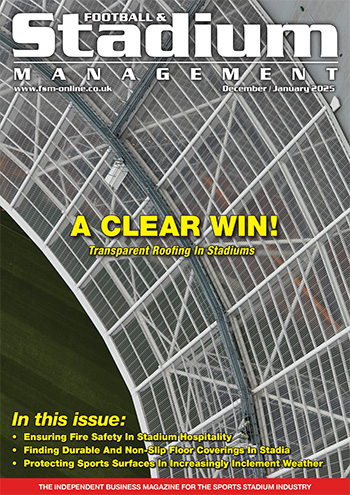Old Trafford Fans’ Invasion Puts Stadium Security In The Spotlight
 Richard Jenkins, Chief Executive of the National Security Inspectorate (NSI), considers the stadium protection issues raised by Manchester United FC’s recent venue breach and how managers can best secure their facilities in the future.
Richard Jenkins, Chief Executive of the National Security Inspectorate (NSI), considers the stadium protection issues raised by Manchester United FC’s recent venue breach and how managers can best secure their facilities in the future.
The chaotic scenes at Manchester United FC’s Old Trafford ground on Sunday 2nd May, after around 100 fans broke into the venue and invaded the pitch, led to violent clashes with extra Police subsequently drafted in from neighbouring forces to help the venue’s security team regain control.
This unwarranted incident focused attention on appropriate stadia security measures and staffing resources and highlighted the potential for disruption, inconvenience and additional cost that can result. The consequences can be wide‑ranging in terms of repair costs, potential fines, possible local authority venue licensing issues, Policing bills and withdrawal of commercial sponsorships due to negative publicity.
Risk Management
Risk assessment in the context of changing threats to a venue can take into account all existing physical security measures around the perimeter such as vehicle barriers, fencing, lighting, entry doors and locking mechanisms. Using the onion‑peeling analogy, ‘layers’ of protection can provide visual deterrence, slow down intrusions, enabling detection and observation systems to provide security operatives crucial time to assess the situation and react accordingly.
The ability to monitor a stadium’s perimeter is best facilitated by appropriate, cost efficient and operationally effective surveillance and detector activated alarm systems. Systems should be designed, specified, installed and maintained by an approved service provider. These organisations seek independent checks on their competence as specialists in their field from UKAS accredited certification bodies such as NSI. The professional hallmark of approval signifies their technical competence evidenced as working to international and British standards and related codes of practice, as well as providing end user customers with a reassuring quality of service.
Scene Surveillance
For example, NSI companies approved to design, install, commission and maintain CCTV surveillance systems must comply with NSI’s Code of Practice NCP 104, assuring a stadium’s owners/managers of an expert assessment of security risks and operational needs, along with a detailed design proposal to ensure exacting specific site risks are addressed. These surveillance measures can provide early warning opportunities to e.g. deploy appropriate manned security resources to deal with/deter area‑specific threats around a stadium’s perimeter before they escalate into more serious incidents.
Detector activated CCTV surveillance systems work particularly well for large or exposed sites and provide an alternative to continuous out‑of‑hours live monitoring of images. When set, a remotely monitored system will activate in response to a detected intrusion and send an alert signal to a Remote Video Response Centre (RVRC), where an operator will evaluate the situation and initiate an appropriate response.
Intruder Alarms
Out‑of‑hours, detector‑activated cameras can also be used as part of an intrusion alarm system generating police response to a confirmed incident. A police URN assigned to third‑party surveillance monitored sites such as stadiums, allow operators at a Remote Video Response Centre (RVRC)to accept alarms from detector‑activated CCTV systems, evaluate the signals, confirm them as genuine and summon a police response.
Police will only provide an immediate response to remotely monitored security systems that meet specified requirements including ‘Type A’ remote signalling systems monitored by approved Alarm Receiving Centres (ARCs) and RVRCs complying with BS 8418 or PD 6662. The systems and services provided by the installing company and the ARC, are approved/certificated by an independent UKAS accredited certification body.
The interface between security staff and physical/electronic security systems continues around a stadium’s outer perimeter with access control measures including door and turnstile entry controls. The latest edition of the code of practice NCP 109 (issue 3) embraces new technologies and methods, equipping providers with robust guidance on advising on the most appropriate systems. It classifies each access point based on a risk assessment and importantly includes fire safety measures such as door release mechanisms based on the current BS EN 60839 series standard.
Conclusion
Incidents like the 2nd May Old Trafford stadium breach may be unusual, often unpredictable and have potentially serious consequences. Appropriate, cost‑effective preventive, deterrent and responsive services provided by approved contractors can help reduce the risk of incidents arising, and aid in the effective recovery process should an incident occur.
Employing approved contractors also signals to stakeholders familiar with specialist approvals - including the police, insurers, local/licensing authorities, and fire & rescue services - stadium and venue operators have the experts onside to help design in both deterrence and effective incident management should it be called on.
Click the article to enlarge it.













































